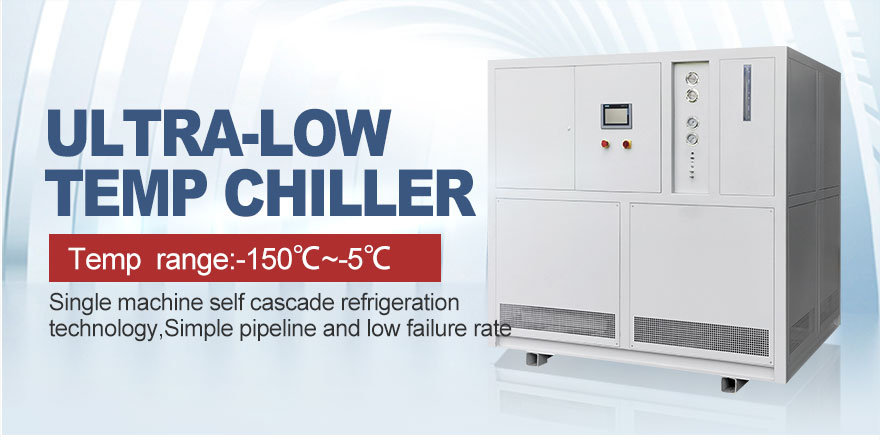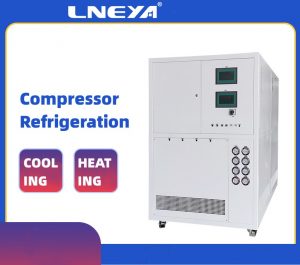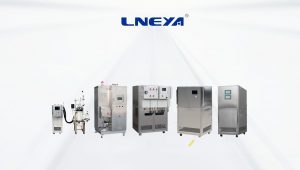Precautions for use of minus 95 degrees cryogenic liquid bath cold trap
The minus 95 degree low temperature liquid bath cold trap (that is, the refrigerator that we often say) is a common refrigeration unit in refrigeration equipment. The rational use of the unit can not only avoid the failure of the unit, but also make the cooling effect more stable.

1. Before using the minus 95 degrees low temperature liquid bath cold trap, you must carefully read the instructions for using the minus 95 degrees low temperature liquid bath cold trap, and then perform the correct installation, commissioning and normal use steps of the equipment.
Second, the minus 95 degrees low temperature liquid bath cold trap should be installed in a stable, ventilated and open place, and the ambient temperature of the installed unit should not exceed 38-40 ℃. After all, the minus 95 degree low temperature liquid bath cold trap is cooled by the fan to exchange air. The temperature is too high and the heat dissipation is not good, then the temperature of the unit will not drop, or there will be a high pressure failure.
3. The tap water can be filtered to ensure that the water quality is clean and free of impurities. The piping of the unit should be installed reasonably, and the size of the pipeline hose should be matched with that of the unit. The size of the water pipe should not be reduced. Otherwise, it will be prone to high-pressure overload, which will affect the quality effect and increase power consumption.
Four, our commonly used minus 95 degrees low temperature liquid bath cold trap power supply is 3-phase 380V 50HZ (1p minus 95 degrees low temperature liquid bath cold trap/2p air-cooled chiller is 220V), so when the unit is connected to the electrical system , Be sure to connect the corresponding power supply voltage according to the nameplate. In addition, the power supply of units going abroad will be different.
Five, pay attention to the operation sequence of the unit. After connecting the unit to the equipment requiring refrigeration, first turn on the power to the ON position, then turn on the chilled water pump switch, and open all the inlet and outlet valves of the chilled water. After the compressor starts to cool, the chilled water will pass through The water outlet is delivered to the cooled equipment. When shutting down the unit, just shut down in the reverse order.
6. When the minus 95 degree low temperature liquid bath cold trap fails, the corresponding indicator light on the control panel of the unit will light up and emit a warning sound. At this time, the unit should be shut down and checked in time. When the company does not have a professional unit maintenance personnel, please firstly freeze the manufacturer, and let the manufacturer guide or arrange the maintenance personnel to deal with it.
Recommandations connexes
-
Advantages of laboratory low-temperature circulators
857The laboratory low-temperature circulator can simultaneously provide constant temperature and current refrigeration, heating, and temperature control equipment. The laboratory low-temperature circulator has a reasonable structure, simple operati...
Voir les détails -
The importance of temperature control for cannabis plant processing
962The legalization of industrial hemp in Europe, America and other countries has increased the demand for equipment for hemp processing. Cannabis eventually comes in the form of CBD extract. In order to convert the plant into a concentrate for medic...
Voir les détails -
Small temperature control system equipment welding maintenance precautions
1150Small thermostat control system equipment pay attention to the point of comparison when repairing, LNEYA professional manufacturers reminded that the welding part is also one of the key points of maintenance, then what aspects should be paid atten...
Voir les détails -
Quand choisir le système de contrôle de la température TCU ?
1015Tout d'abord, il faut savoir que la marmite de réaction doit généralement assurer le contrôle de la température nécessaire en même temps que la réaction chimique du matériau lui-même. Grâce au changement de température du fluide circulant dans l'enveloppe ...
Voir les détails
 LNEYA Industrial Chillers Fabricant Fournisseur
LNEYA Industrial Chillers Fabricant Fournisseur














